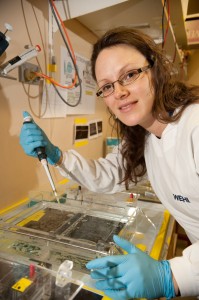Researchers at Geoscience Australia have unravelled the development of a unique seafloor community thriving in complete darkness below the giant ice sheets 
Today it is home to animals such as sponges and bryozoans fed by plankton carried in on the current. Dr Alix Post studied shell fossils within core samples where she unexpectedly found evidence of these isolated ecosystems.









